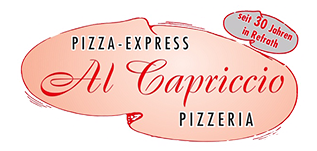In various environments, maintaining cleanliness and safety is paramount. Educational institutions, food production facilities, rental properties, and healthcare establishments face unique challenges in pest management that demand ongoing attention. These settings harbor not only people but also vulnerable populations requiring specific safeguards against invading insects and rodents.
Schools play a crucial role in shaping young minds, making it essential to ensure a pest-free atmosphere where students can thrive. Likewise, the food processing sector must adhere to strict health regulations; any infestation can lead not only to safety violations but also to compromising public health. Meanwhile, rentals that cater to diverse tenants need to prioritize an environment that is as welcoming as it is sanitary.
Finally, healthcare facilities have an added responsibility to protect the well-being of their patients, which makes them particularly sensitive to pest-related issues. Each of these fields illustrates the importance of proactive measures in safeguarding spaces against unwanted intruders.
Food Processing Facilities: Maintaining Sanitary Conditions
In the food processing sector, upholding hygiene standards is critical to ensure the safety and quality of food products. Facilities engaged in manufacturing, from restaurants to warehouses, face unique challenges that demand regular attention. A strategic approach to sanitation can mitigate risks associated with infestations, affecting the integrity of the operations.
To maintain cleanliness in food processing establishments, it is imperative to conduct routine inspections and implement proactive measures. Regular collaboration with experts can aid in developing a tailored plan that suits the specific needs of hotels, offices, and schools. It is only through diligent monitoring and swift action that potential issues can be addressed before they escalate, ultimately protecting both consumers and business reputations.
Healthcare Institutions: Protecting Patients and Staff
In healthcare settings, maintaining a clean, safe environment is of utmost importance. Facilities such as hospitals, clinics, and nursing homes must prioritize measures to protect both patients and staff from potential threats posed by unwanted intruders. Regular interventions are key to achieving a hygienic atmosphere that supports healing and well-being. For reliable assistance, facilities can refer to https://higginstermiteinc.com/, which offers specialized options tailored to their needs.
From examination rooms to waiting areas, healthcare facilities are hotspots for various activities and interactions. A single pest sighting can lead to significant concerns regarding hygiene and safety. Such occurrences not only jeopardize patient health but also put the professional image of the institution at risk. Swift and continual monitoring is vital to ensure that medical spaces remain free of contamination, allowing healthcare professionals to focus on their critical duties.
The consequences of neglecting pest control in these environments extend beyond mere discomfort; they implicate the welfare of all who enter. By implementing consistent maintenance strategies, healthcare organizations can confidently safeguard their premises, fostering an atmosphere conducive to healing and trust.
Hospitality Sector: Ensuring Guest Satisfaction and Safety
The hospitality industry, encompassing hotels, restaurants, and rentals, places a high priority on guest comfort and protection. Maintaining a pristine environment is critical for attracting and retaining visitors. Regular inspections and preventive measures are indispensable to uphold the appeal of lodgings and eateries alike. A dedicated approach to cleanliness allows establishments to stand out in a competitive market.
In this sector, customer experiences can be significantly impacted by the presence of unwanted invaders. Hotels and restaurants should be particularly attentive to maintaining their spaces as inviting havens. This involves not only addressing issues efficiently but also implementing proactive strategies to deter pests. Properties must prioritize sanitation protocols for kitchens, dining areas, and guest accommodations.
Beyond immediate threats, long-term planning is paramount. For hotels, frequent checks in housekeeping areas, storage, and dining spaces minimize risks and ensure satisfaction. Considerable foot traffic in offices and schools connected to hospitality further emphasizes the need for vigilance. A tranquil atmosphere in shared spaces is a key factor in fostering positive impressions.
As they operate in a diverse environment that includes warehouses and retail units, hospitality providers must also be prepared to handle pest challenges effectively. With the potential for contamination and damage to reputation, timely interventions are more than just a checkbox; they safeguard against disruptions in service and assure patrons of their wellbeing.
Overall, a fortified stance against infestations not only protects properties but also enhances the overall guest experience, ensuring they leave with fond memories and a desire to return.
